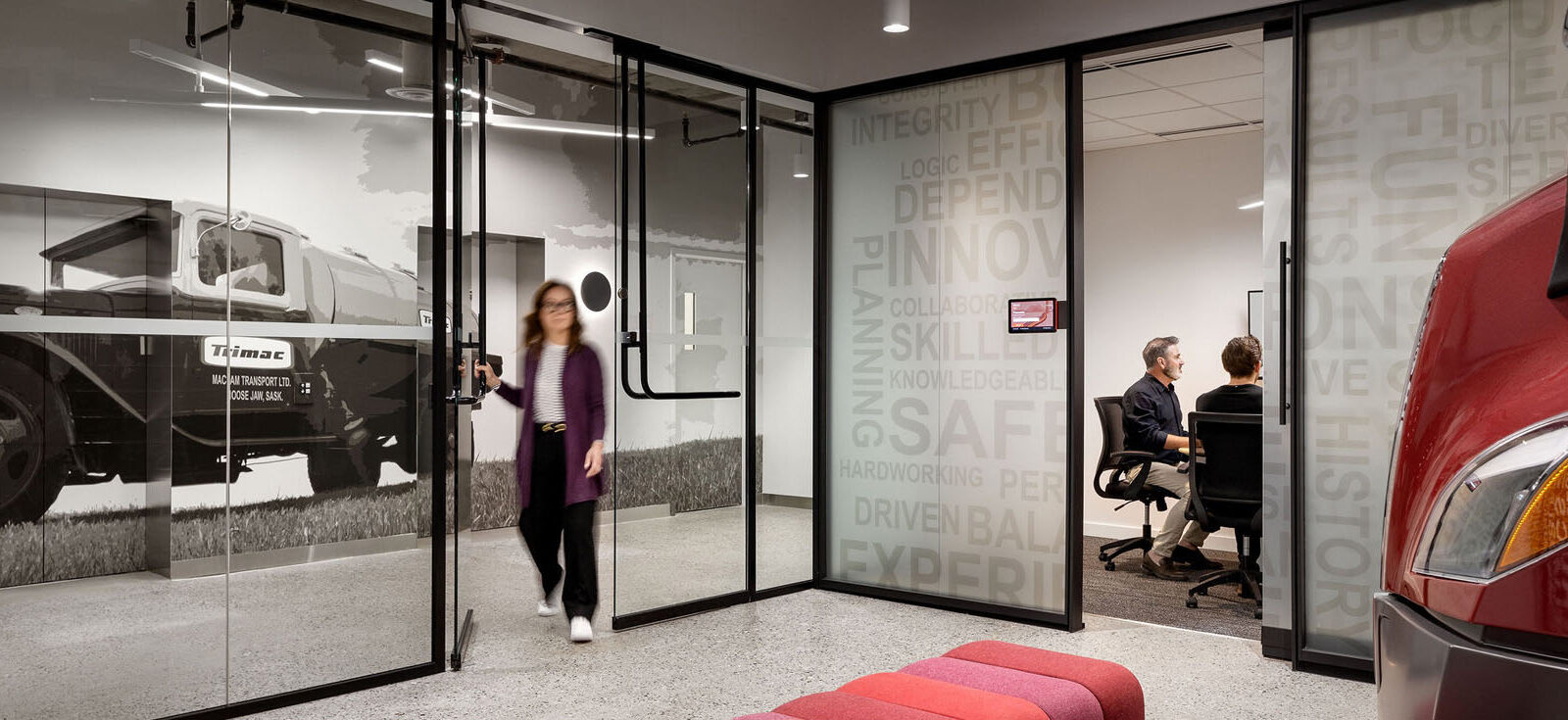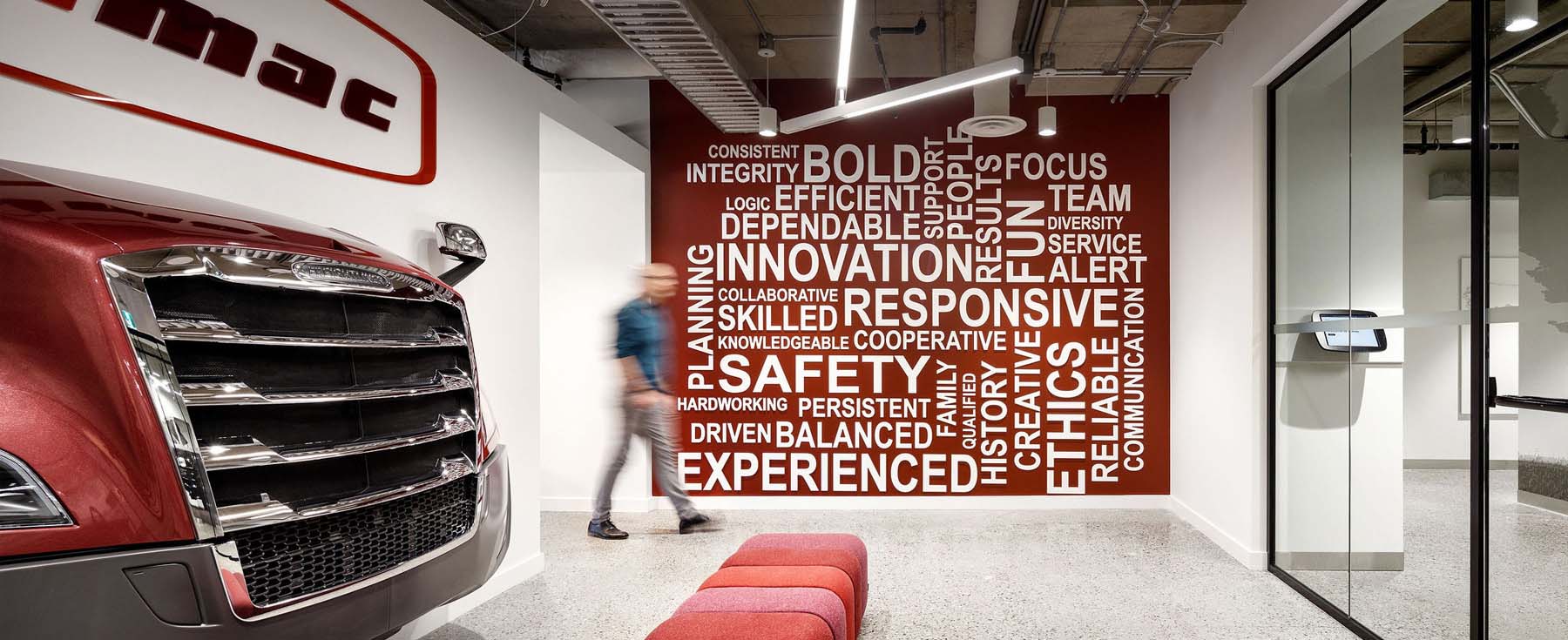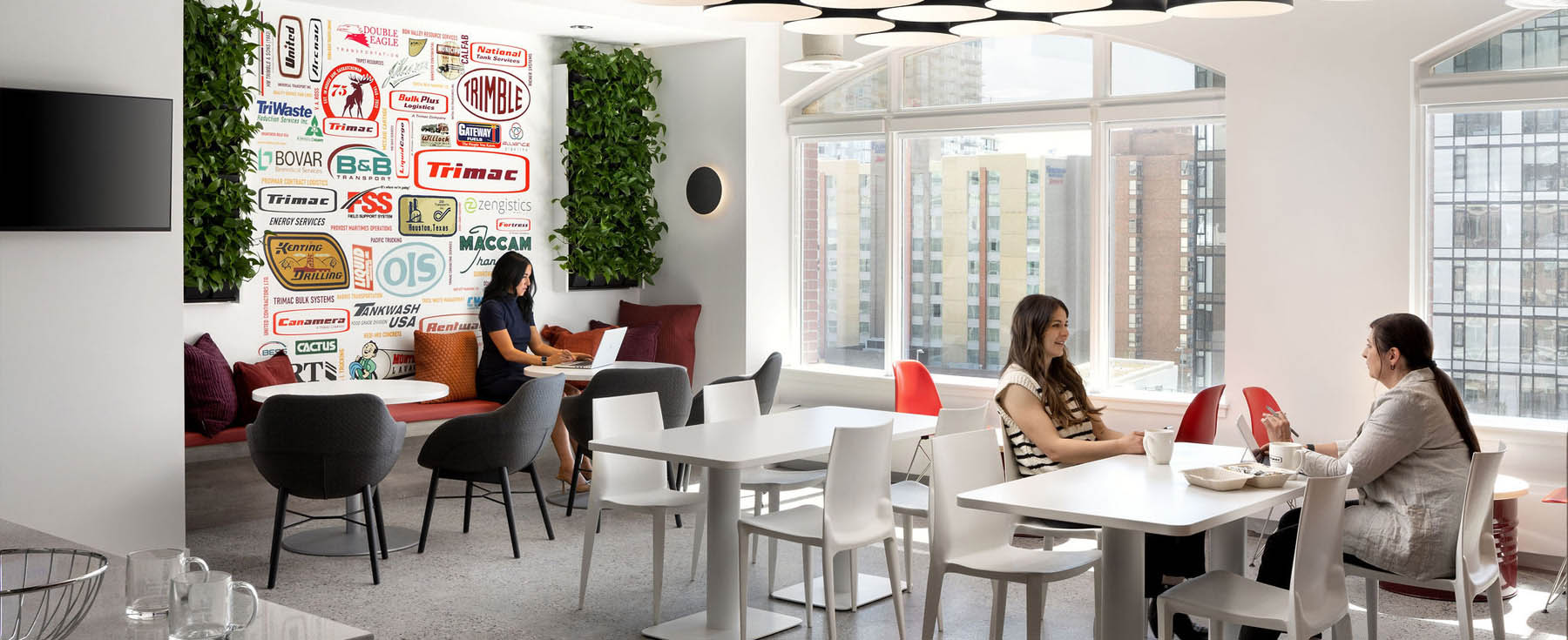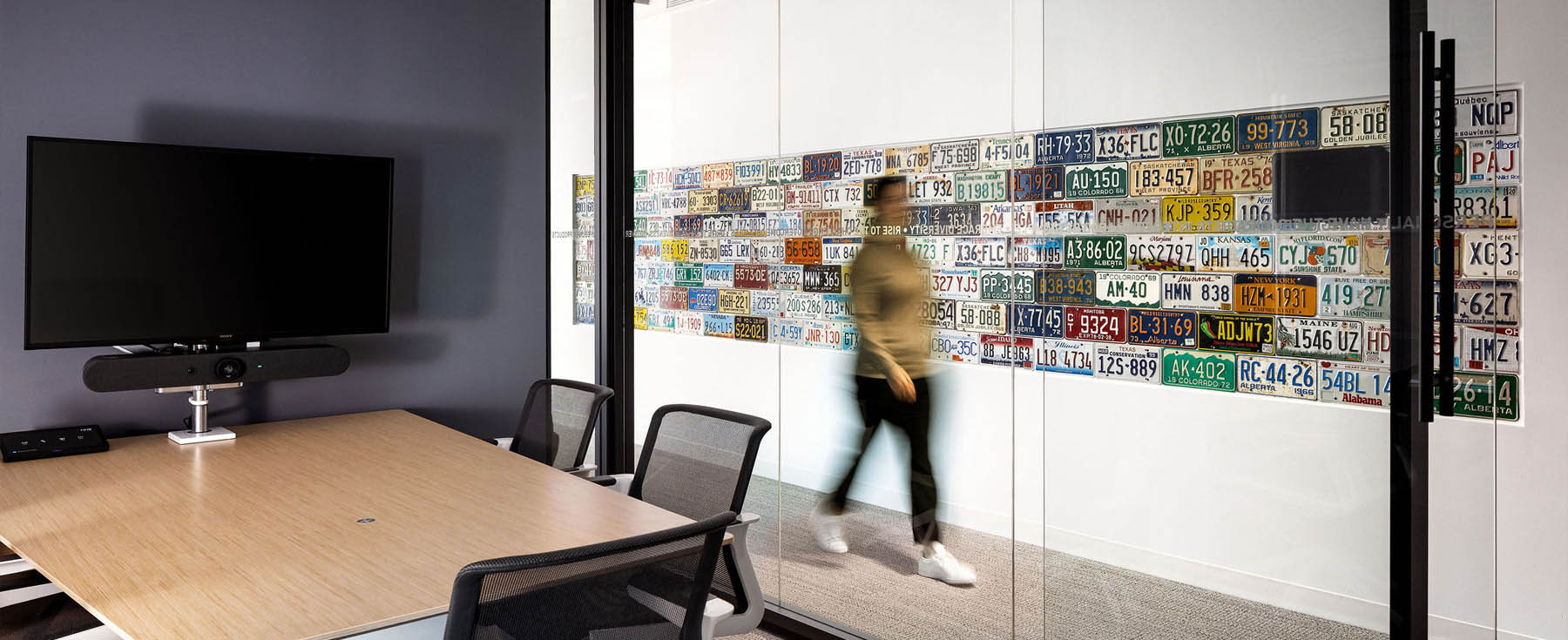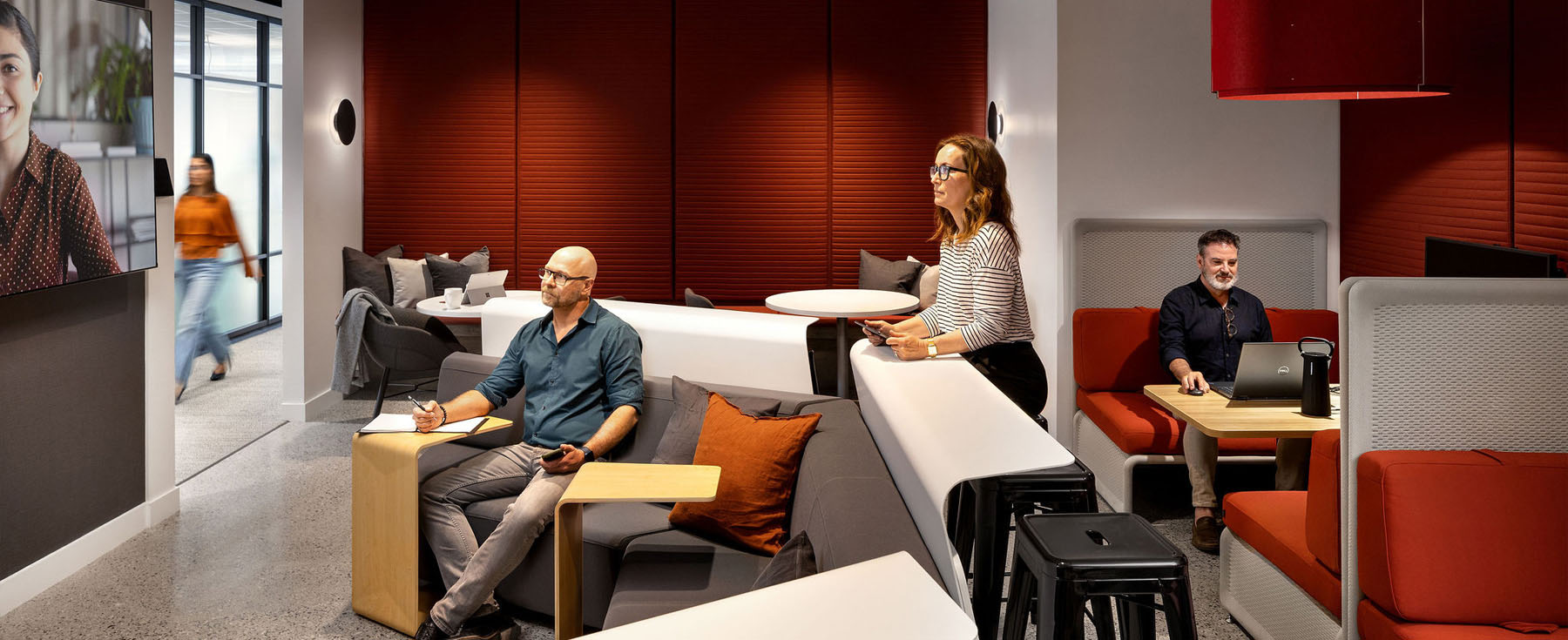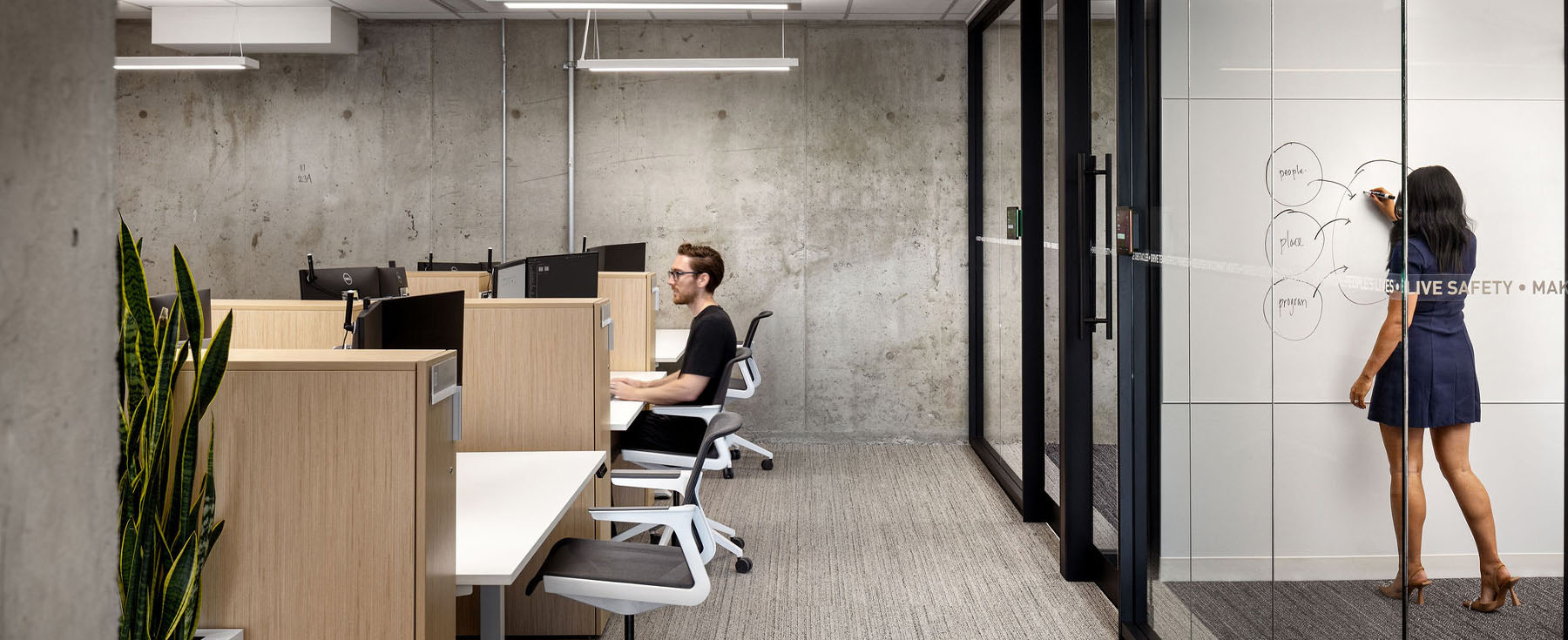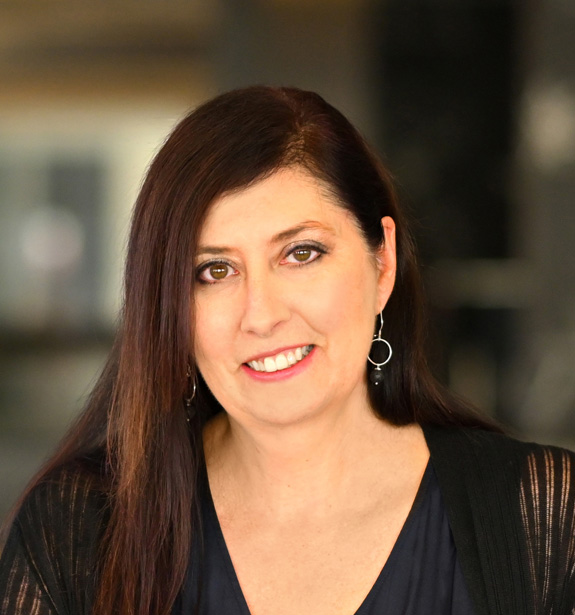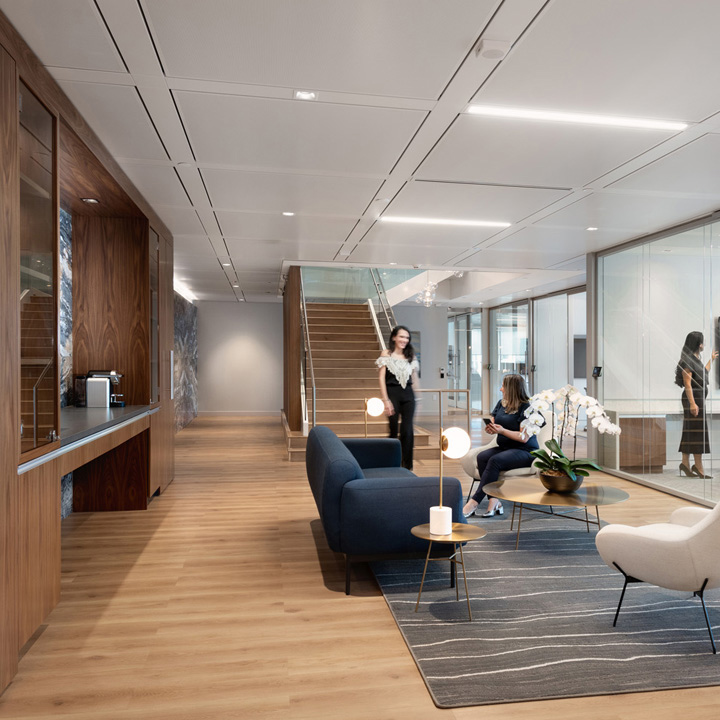Trimac’s new activity-based workplace supports its hybrid work strategy by consolidating three floors of suburban office space into a single downtown location, offering a variety of agile and flexible work settings.
Embracing a holistic design approach, the project focused on fostering collaboration, sustainability, and employee engagement. Throughout the design process, town hall meetings ensured that staff were actively involved in the transformation.
The workplace was carefully crafted to accommodate diverse work styles, with collaborative zones, unassigned and bookable focus desks, private offices, and various types of meeting spaces.
Employee well-being is enhanced through abundant natural light, views, and green walls with integrated biophilia. By reducing its real estate requirements by one-third, Trimac significantly lowered its carbon footprint and overall environmental impact.
Existing furniture was redeployed and combined with banquette and tiered seating, as well as smaller tables for informal work – each equipped with built-in power and data access points. Nearby ‘huddle rooms’ support more intensive tech-driven tasks.
Celebrating Trimac’s 75-year history and brand identity was a central design priority. The original Trimac truck sits proudly in the reception area, honouring the company’s legacy. A graphic word wall communicates Trimac’s core values, while a feature wall composed of reclaimed auto parts sourced from the company’s mechanic shop reflects the brand and its commitment to sustainability.
EXPLORE MORE
We’d love to get to know you
Get in touch
"*" indicates required fields
Get in touch
Share

